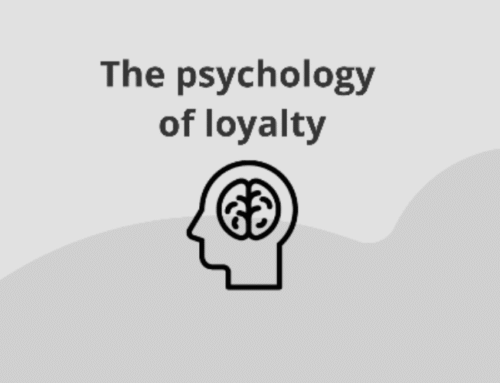Loyalty Marketing: Most Effective Ways to Acquire Lapsed Customers
Customer retention is a linchpin in sustaining a successful business. But what about those customers who have slipped through the cracks, those who once showed interest in your products or services but have since drifted away? It’s a well-known fact that it’s more cost-effective to keep existing customers than to acquire new ones. Enter the realm of lapsed customers, a demographic that holds enormous untapped potential for businesses willing to invest in rekindling those lost connections. However, re-engagement takes this principle a step further. It’s not just about retaining, but also reactivating. That’s where loyalty marketing comes into play, offering a strategic approach to win back indecisive customers.
So, if you’re ready to unlock the potential of your past customers and bring them back into the fold, read on for a journey into the world of customer retention and loyalty marketing.

Understanding Lapsed Customers
Lapsed customers meaning those who were once active and engaged with your business but have since disengaged or stopped making purchases. These are customers who, at some point in the past, found value in your products or services. Therefore, their value lies in that they already have familiarity with your brand, and often, the barrier to re-engagement is lower than acquiring entirely new customers. They have the potential to become not just repeat buyers but also loyal advocates when effectively reactivated. Their value is not only in the immediate revenue they can generate but also in their ability to contribute to long-term customer loyalty and word-of-mouth marketing.
The statistics on lapsed customer re-engagement are compelling. Research consistently shows that reactivating lapsed customers can be significantly more cost-effective than acquiring new ones. It’s estimated to be five times more expensive to acquire a new customer than to retain an existing one. Moreover, statistics reveal that lapsed customer campaigns can yield substantial results; a 10% increase in customer retention levels can result in a 30% increase in the value of a company’s customer base. Understanding how to deal with lapsed customers and employ effective loyalty marketing strategies can lead to impressive returns, making this segment a treasure trove of opportunity for businesses looking to reignite their customer relationships.
Lapsed Customers Examples: Analyzing Reasons for Lapse
Identifying why customers lapse is crucial in developing effective strategies to win them back. There are various common reasons for lapse, including:
- Competitive offers: Customer lapse may have been enticed by better deals or offers from competitors, leading them to switch their loyalty.
- Lack of engagement: A lack of personalized communication or engagement can cause customers to lose interest in your brand over time.
- Change in circumstances: Personal or financial changes in a customer’s life can lead to decreased spending or interest in certain products or services.
- Poor service: Negative experiences or unsatisfactory client relations can drive customers away.
- Perceived irrelevance: Customers might perceive that your products or services no longer align with their needs or preferences.
- Communication overload: On the flip side, excessive marketing communications can overwhelm customers and lead to disengagement.
Gathering feedback and data is vital in understanding why they stopped doing business with you. By reaching out through surveys or direct communication, you can gain valuable insights into their experiences and expectations. This information is a goldmine for improving your products, services, and experience. It allows you to adapt your loyalty marketing efforts to align with needs and preferences, increasing the chances of winning them back and preventing future lapses. Additionally, data-driven insights can help identify segments, enabling you to create more personalized re-engagement campaigns.

How to ‘Re-Engage Lapsed Customers: The Power of Loyalty Marketing
Loyalty marketing is a strategic approach focused on retaining and nurturing existing customers, rather than just acquiring new ones. Its primary role is to foster long-term relationships between a business and its clientele by offering incentives and rewards to loyal customers. This approach is built on the idea that retaining customers can be more cost-effective and profitable than constantly seeking new ones. By gathering and analyzing data about customer behavior, preferences, and purchase history, businesses can tailor personalized offers and experiences to keep customers engaged and loyal.
There have been numerous successful loyalty marketing campaigns that illustrate the power of this approach. One standout example is Starbucks’ loyalty program, known as “Starbucks Rewards.” This program offers customers points for their purchases and leverages a mobile app to provide a convenient and personalized experience. It allows customers to accumulate stars, which can be redeemed for free drinks and food items. Starbucks Rewards has increased customer retention and significantly boosted the company’s revenue. Another is Amazon Prime, which, while not a traditional loyalty program, effectively encourages customer loyalty through its subscription-based model, providing perks like free shipping, streaming services, and exclusive deals to its members. These examples underscore how loyalty marketing can drive customer engagement, increase sales, and solidify a brand’s presence in the market.
Personalization and Segmentation
By tailoring your efforts to individual customer preferences and behaviors, you not only demonstrate a genuine commitment to their satisfaction but also significantly increase the chances of re-engagement. Through personalized offers, content, and recommendations, you can remind lapsed customers of the value you offer and the reasons they chose your brand in the first place. Meanwhile, segmentation allows you to group customers with similar characteristics or purchase histories, enabling you to craft targeted campaigns that speak directly to their specific needs and desires. This dual approach rekindles the connection and fosters a sense of exclusivity and recognition, reinforcing the loyalty that brought them to you in the first place. In the world of loyalty marketing, personalization and segmentation are the cornerstones of reigniting relationships and reclaiming your valued customers.
Crafting Irresistible Offers
Crafting irresistible offers must be thoughtfully designed to grab the attention of former customers and compel them to re-engage with a brand. The significance lies in the ability of such offers to create a strong incentive, demonstrating that the business values their patronage and is willing to go the extra mile to regain their trust and loyalty. Irresistible offers can rekindle interest, trigger a sense of reciprocity, and ultimately lead to increased customer retention, driving business growth and profitability. It’s the art of tailoring offers that entice and set the stage for lasting, mutually beneficial relationships.
Tips for Compelling Offers
- Personalization: Tailor your offers to suit the preferences and purchase history of each customer. Use their name, reference past purchases, and recommend products or services they might like based on their previous interactions with your brand.
- Exclusive discounts: Offer exclusive discounts or promotions to make them feel valued.
- Limited-time offers: Create a sense of urgency by setting a short expiration date for your offers. Time-limited promotions can encourage quick action.
- Multichannel communication: Reach out through multiple channels, such as email, SMS, social platforms, and even direct mail. Consistent messaging across these channels can reinforce the offer’s importance.
- Bundle deals: Package complementary products or services together at a discounted price to entice a purchase that might not have been considered.
- Reward programs: Introduce loyalty reward programs that offer points, cashback, or other incentives for repeat purchases.
- Free gifts or samples: Include a free gift, sample, or trial offer with a purchase to add value to their purchase and introduce them to new products.
- Easy redemption: Make it simple for lapsed customers to redeem the offer. Complicated redemption processes can deter them from returning.
- Upselling and cross-selling: Suggest related or higher-priced products during the purchase process to increase the average order value.
- Referral programs: Encourage friend or family referrals to your brand with enticing incentives, such as discounts for both the referrer and the referee.
Examples of Compelling Offers
- Personalized discount: “We missed you, [Customer’s Name]! Enjoy a 20% discount on your next purchase based on your favorite products.”
- Limited-time flash sale: “Hurry! Our 48-hour exclusive sale is now on. Save 30% on select items before it’s gone.”
- Buy one, get one free: “Buy one of your favorite products, and get a second one for free, just for coming back to us.”
- Loyalty points bonus: “Earn double loyalty points on your next purchase, which you can redeem for exciting rewards.”
- Free shipping: “We’re offering free shipping on all orders for our returning customers. No minimum purchase required.”
- Complimentary gift: “As a token of our appreciation for your return, we’re sending you a free gift with your next purchase.”
- Upgrade offer: “Upgrade to our premium membership for a special rate and enjoy exclusive benefits, including free returns and priority customer support.”
- Referral incentive: “Refer a friend, and you both get 25% off your next purchase. Share the love and savings!”
- Seasonal bundles: “Get ready for the holidays with our special bundle: Buy a gift set and receive a free holiday-themed accessory.”
- Cross-sell package: “Enhance your purchase with our recommended accessories at a discounted rate when you buy them together.”

Multi-Channel Engagement
Lapsed customers may need reminders and incentives to return. By utilizing various channels, you can create a more comprehensive approach to re-engaging them. Different customers prefer different communication methods, and reaching out through multiple channels ensures a higher chance of your message catching their attention.
To create a successful omnichannel engagement strategy, it’s crucial to maintain consistency and coherence across all channels. Start by analyzing your customer data to determine which channels have been most effective in the past. Tailor your messaging and offers to suit the specific channel and customer segment. For example, you can send an email marketing promotion or discount, and then follow up with a targeted social media ad showcasing the same offer. Use automation tools to synchronize your efforts and track customer responses to refine your strategy continually. Additionally, it’s important to ensure that your brand’s identity and messaging remain consistent across all channels to provide a seamless customer experience, regardless of where they choose to engage with your brand.
Timing and Frequency of Communication
Reacquiring lapsed customers requires a delicate balance between staying on their radar without overwhelming them. Understanding when your customers are most receptive to your messages is crucial. By analyzing past purchase behavior, browsing history, and other relevant data, you can identify optimal times to engage with personalized offers and reminders. Keep in mind that the frequency of communication should align with the customer’s lifecycle and preferences. Over-communication can lead to fatigue, while infrequent contact may result in customers forgetting about your brand. Striking the right balance ensures that your messages are not only well-timed but also well-received.
Automated sequences allow you to craft a consistent and tailored customer journey without the need for constant manual intervention. Start by segmenting your lapsed customers into categories based on their behavior and preferences. Then, design a series of emails or messages that gradually re-engage them. For example, a well-structured sequence could begin with a friendly reminder of your brand’s value, followed by personalized offers and exclusive incentives, building up to a call to action. By automating this process, you can ensure that each customer receives the right message at the right time, maximizing the chances of their return and rekindling their loyalty to your brand. Don’t forget to continually analyze and refine these sequences based on customer responses to keep the approach fresh and effective.
Monitoring and Measuring Success
Key Performance Indicators (KPIs) are essential metrics used to monitor and measure the success of any marketing strategy. By consistently tracking these KPIs, you can assess the impact of your loyalty marketing efforts and make adjustments as needed to improve your customer reactivation rates and overall business performance.
- Customer reactivation rate: This KPI measures the percentage of lapsed customers who have re-engaged with your brand. It is a fundamental indicator of the success of your loyalty marketing efforts. To calculate it, divide the number of reactivated customers by the total number of lapsed customers and multiply by 100.
Customer Reactivation Rate = (Reactivated Customers / Total Lapsed Customers) x 100
- Churn rate: This KPI measures the percentage of churned customers who have completely disengaged from your brand during a specific period. Tracking this KPI will help you understand how well you are retaining existing customers and identify potential lapsed customers. A decrease is often a positive sign.
Churn Rate = (Number of Customers Lost / Total Customers at the Start of the Period) x 100
- Customer Lifetime Value (CLV): CLV is a measure of the total value a customer brings to your business over their entire relationship with your brand. It helps you understand the long-term impact of reactivating lapsed customers on your revenue.
- Customer engagement: This KPI measures how actively reactivated customers are interacting with your brand. It includes metrics like email open rates, click-through rates, social engagement, and website visits. The more engaged customers are, the more likely they are to make a purchase.
- Conversion rate: This KPI tracks the percentage of reactivated customers who complete a desired action, such as making a purchase, signing up for a newsletter, or downloading an app. A higher conversion rate indicates that your loyalty marketing efforts are effective.
Conversion Rate = (Number of Conversions / Number of Reactivated Customers) x 100
- Customer Satisfaction and Net Promoter Score (NPS): Monitoring customer satisfaction and NPS scores can provide insight into how well your reactivated customers perceive your brand. Higher satisfaction and NPS scores are often correlated with increased loyalty and repeat purchases.
- Return on Investment (ROI): Calculate the ROI of your loyalty marketing campaigns by comparing the cost of your marketing efforts to the revenue generated from reactivated customers. A positive ROI indicates that your strategy is profitable.
ROI = (Revenue from Reactivated Customers – Marketing Costs) / Marketing Costs x 100
- Average Order Value (AOV): AOV measures the average amount spent by reactivated customers in a single transaction. Increasing AOV can significantly boost your revenue.
AOV = Total Revenue from Reactivated Customers / Number of Transactions
- Customer Retention Rate: This KPI tracks the percentage of reactivated customers who continue to make purchases over time. A high customer retention rate is a clear indicator that your loyalty marketing strategies are working effectively.
Customer Retention Rate = (Number of Reactivated Customers Still Active / Total Reactivated Customers) x 100
- Feedback and complaints: Monitoring customer feedback and complaints can help you identify areas where your reactivation strategies might need improvement. Addressing customer concerns can lead to better results eventually.




